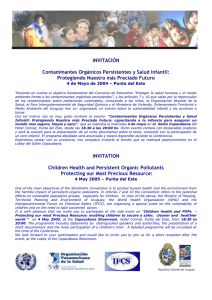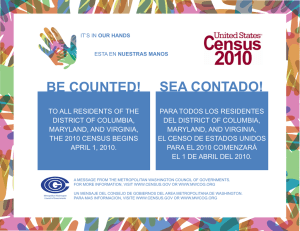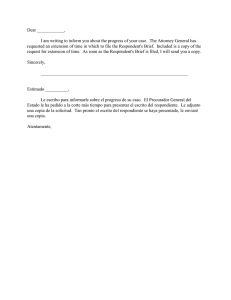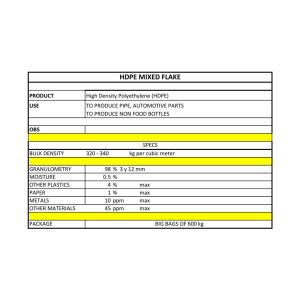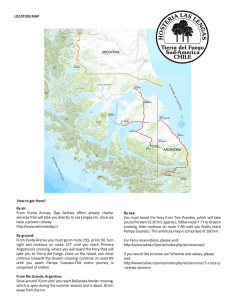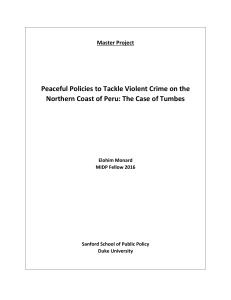(Hanley) en Tumbes, Perú. Primavera 2007
Anuncio
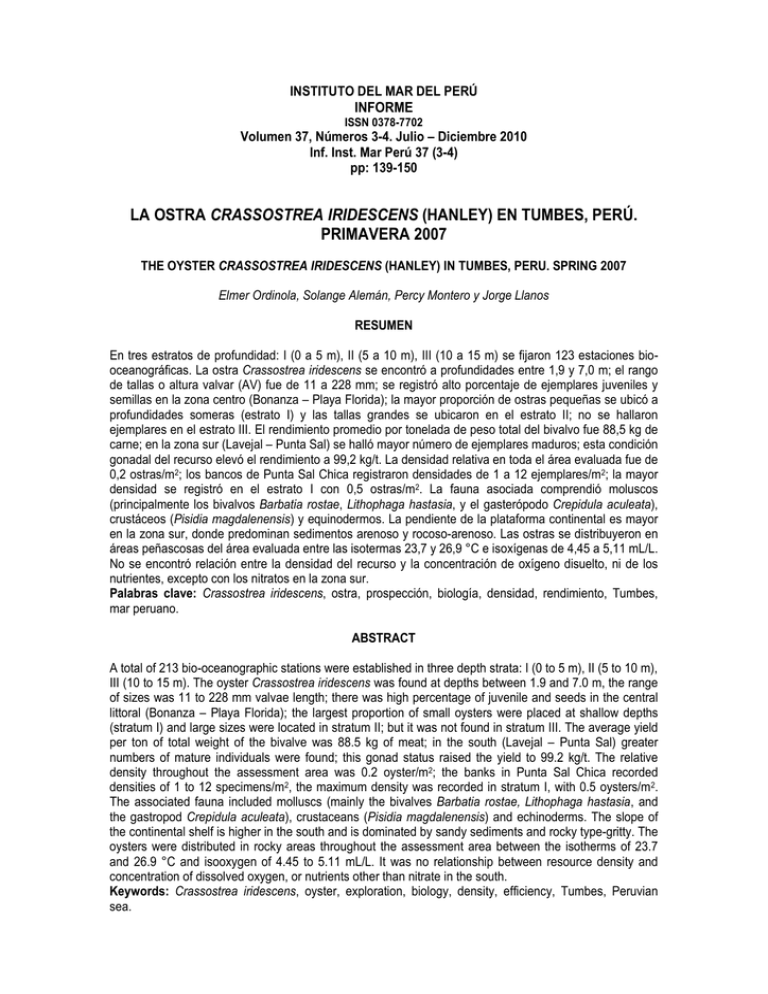
INSTITUTO DEL MAR DEL PERÚ INFORME ISSN 0378-7702 Volumen 37, Números 3-4. Julio – Diciembre 2010 Inf. Inst. Mar Perú 37 (3-4) pp: 139-150 LA OSTRA CRASSOSTREA IRIDESCENS (HANLEY) EN TUMBES, PERÚ. PRIMAVERA 2007 THE OYSTER CRASSOSTREA IRIDESCENS (HANLEY) IN TUMBES, PERU. SPRING 2007 Elmer Ordinola, Solange Alemán, Percy Montero y Jorge Llanos RESUMEN En tres estratos de profundidad: I (0 a 5 m), II (5 a 10 m), III (10 a 15 m) se fijaron 123 estaciones biooceanográficas. La ostra Crassostrea iridescens se encontró a profundidades entre 1,9 y 7,0 m; el rango de tallas o altura valvar (AV) fue de 11 a 228 mm; se registró alto porcentaje de ejemplares juveniles y semillas en la zona centro (Bonanza – Playa Florida); la mayor proporción de ostras pequeñas se ubicó a profundidades someras (estrato I) y las tallas grandes se ubicaron en el estrato II; no se hallaron ejemplares en el estrato III. El rendimiento promedio por tonelada de peso total del bivalvo fue 88,5 kg de carne; en la zona sur (Lavejal – Punta Sal) se halló mayor número de ejemplares maduros; esta condición gonadal del recurso elevó el rendimiento a 99,2 kg/t. La densidad relativa en toda el área evaluada fue de 0,2 ostras/m2; los bancos de Punta Sal Chica registraron densidades de 1 a 12 ejemplares/m2; la mayor densidad se registró en el estrato I con 0,5 ostras/m2. La fauna asociada comprendió moluscos (principalmente los bivalvos Barbatia rostae, Lithophaga hastasia, y el gasterópodo Crepidula aculeata), crustáceos (Pisidia magdalenensis) y equinodermos. La pendiente de la plataforma continental es mayor en la zona sur, donde predominan sedimentos arenoso y rocoso-arenoso. Las ostras se distribuyeron en áreas peñascosas del área evaluada entre las isotermas 23,7 y 26,9 °C e isoxígenas de 4,45 a 5,11 mL/L. No se encontró relación entre la densidad del recurso y la concentración de oxígeno disuelto, ni de los nutrientes, excepto con los nitratos en la zona sur. Palabras clave: Crassostrea iridescens, ostra, prospección, biología, densidad, rendimiento, Tumbes, mar peruano. ABSTRACT A total of 213 bio-oceanographic stations were established in three depth strata: I (0 to 5 m), II (5 to 10 m), III (10 to 15 m). The oyster Crassostrea iridescens was found at depths between 1.9 and 7.0 m, the range of sizes was 11 to 228 mm valvae length; there was high percentage of juvenile and seeds in the central littoral (Bonanza – Playa Florida); the largest proportion of small oysters were placed at shallow depths (stratum I) and large sizes were located in stratum II; but it was not found in stratum III. The average yield per ton of total weight of the bivalve was 88.5 kg of meat; in the south (Lavejal – Punta Sal) greater numbers of mature individuals were found; this gonad status raised the yield to 99.2 kg/t. The relative density throughout the assessment area was 0.2 oyster/m2; the banks in Punta Sal Chica recorded densities of 1 to 12 specimens/m2, the maximum density was recorded in stratum I, with 0.5 oysters/m2. The associated fauna included molluscs (mainly the bivalves Barbatia rostae, Lithophaga hastasia, and the gastropod Crepidula aculeata), crustaceans (Pisidia magdalenensis) and echinoderms. The slope of the continental shelf is higher in the south and is dominated by sandy sediments and rocky type-gritty. The oysters were distributed in rocky areas throughout the assessment area between the isotherms of 23.7 and 26.9 °C and isooxygen of 4.45 to 5.11 mL/L. It was no relationship between resource density and concentration of dissolved oxygen, or nutrients other than nitrate in the south. Keywords: Crassostrea iridescens, oyster, exploration, biology, density, efficiency, Tumbes, Peruvian sea.
